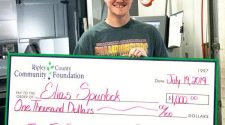RFID, digital printing, QR codes, barcodes and augmented reality are among the technologies that, if well deployed, can make supply chains smarter.
Dec 13, 2020Before studying to be a journalist, I had a remarkable experience at another college with Philip Kotler’s marketing books, when I gained my first knowledge about that subject–which, incidentally, I have always tried to employ in my professional career. One of the unforgettable lessons I studied in those books, which is part of Kotler’s and other business philosophers’ thoughts, concerns what has been defined as “marketing myopia,” or a limited view of business.
An example of this is the famous case of railway companies from England and the United States that, instead of seeing themselves as transport providers, defined themselves as basic industries. The result of this was the emergence of car and truck companies that dethroned the powerful railways. Had the railway companies understood the historical moment in which they were inserted, they might have diversified their businesses and maintained their strength by selling cars.
Note that this happened at least 100 years before Steve Jobs, the Apple wizard, realized he was not in the electronics equipment industry, but in the media industry! See how amazing the power of knowledge and study can be in taking us much further? This is true even if the studying is not formal, as in the case of Jobs, who never sat on a university bench. This shows that history repeats itself, like the waves of the sea—which are not the same but are similar.
Consider, then, that we are riding a new wave. We are facing a new evolution from the Internet to the Internet of Things, and from the Internet of Things to the Internet of Packaging—that is, the Internet of Goods and the Internet of Supply Chains. Here’s a question I like to ask myself: What would Jobs do and what would Kotler say, from the vantage point of Kotler’s almost 90 years of age? I am not sure, but I always venture to say what I think, taking them as inspiration.
Based on what I’ve read (and I swear it wasn’t just cartoon magazines), technology providers should see themselves as business consultants and not as sellers of tags, equipment, software or services. Those who view themselves as sellers of “things” have less opportunity to win than sellers of ideas do—and by “ideas,” I mean business consulting. Business consultants, in turn, have two hemispheres to design their vectors, keeping in mind that there is a sphere of possibilities in the 3D world to view themselves from the same starting point, in the center, and as a function of time.
As vector hemispheres, imagine the northern and southern hemispheres of the Earth. Consider that one half is set back and the other half is set forward. If you move south, the closer you are to 90 degrees south, the more efficiently you will achieve success. On the other hand, the closer you get to the Equator, the slower the advance in the south or the regression in the north. The total regression waits for those who sail toward 90 degrees north latitude.
In this imaginary world of forward and backward, we can Cartesianly assume that there are more effective business technologies in Antarctica than in Ecuador or, worse, in Greenland. I am not saying that in Ecuador there is no technology, only that the pager is at the North Pole, whereas the smartphone is in Antarctica.
Do you follow my reasoning? What I mean is that success does not depend purely and simply on whether technology involves wireless radio tags (RFID) or digital printing, QR codes or anything else defined as “high tech.” Success depends on how the best technologies are combined to make better business and in the best possible way—that is, with lower costs and higher revenues.
If you participated in the recent IoP Journal World 2020 conference and came away with this message, I am extremely happy. If not, I hope you have been inspired now, through these poorly drawn lines. I can assure you that at IoP Journal, I aim to guide business minds closer to 90 degrees south latitude. Shall we sail together?
Edson Perin is the editor of IoP Journal Brasil and the founder of Netpress Editora.


















